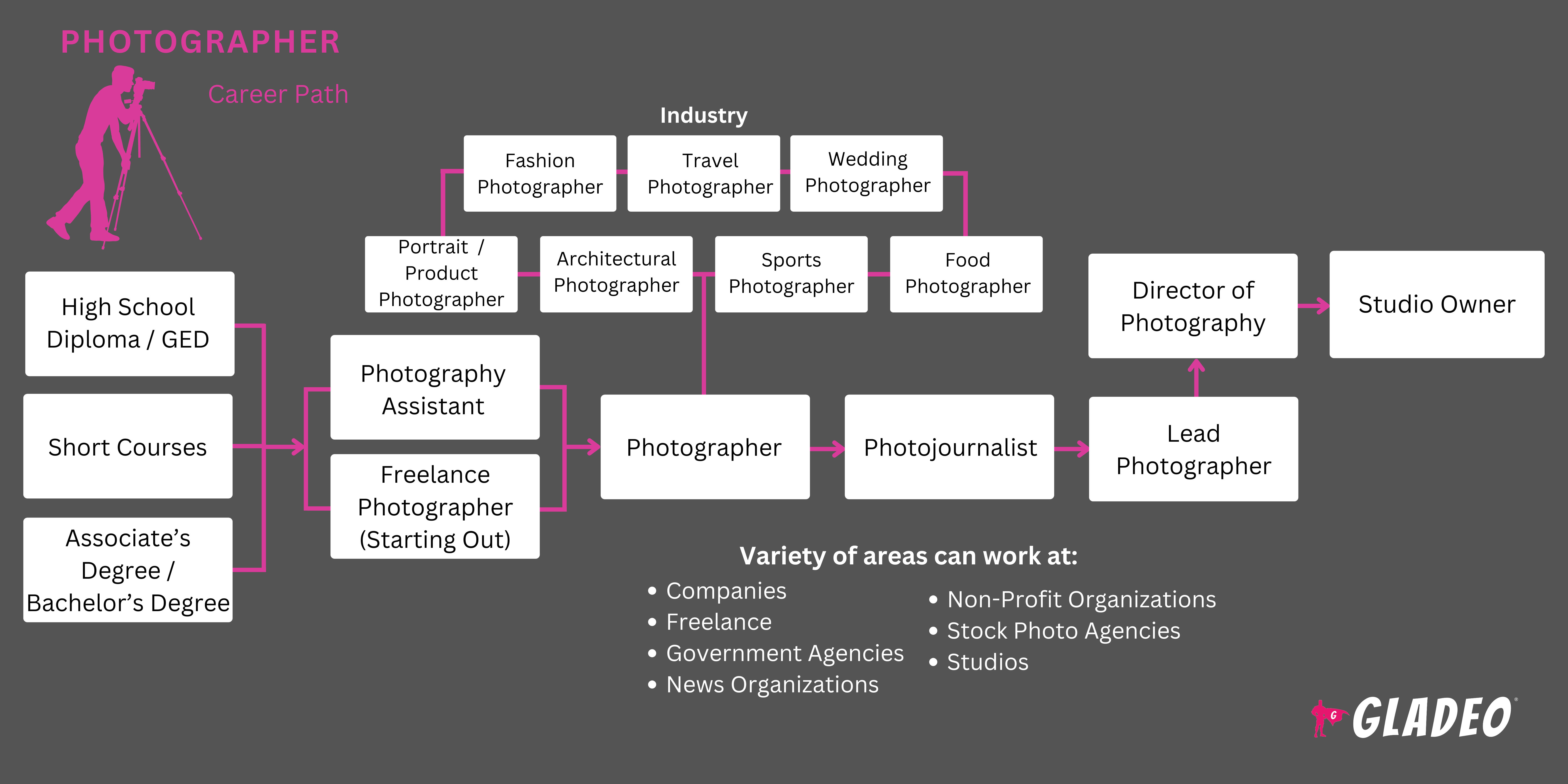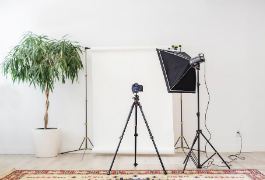Focos de atención
Fotógrafo publicitario, Fotógrafo comercial, Fotógrafo de graduación, Fotógrafo de periódico, Editor de fotografía, Fotógrafo, Fotoperiodista, Fotógrafo de retratos, Fotógrafo deportivo, Fotógrafo de estudio
Photography is a multipurpose art that captures images of people, objects, and moments in time using a camera. These images might be used simply to capture visual information, such as a passport photo, or they can tell stories and provide visual records of events, like photos of a wedding or a news-worthy occurrence. Often, photos serve as an artistic expression to be used as decor.
The artists behind the lens are Photographers, hired to use their combination of technical abilities, creativity, timing, and eye for color and composition to capture these images.
Photographers may specialize in fields such as portrait, commercial, industrial, aerial, scientific, news, or fine arts photography. In addition to their cameras, they may also use lighting equipment and photo editing software to enhance their images.
- Capturing and preserving significant personal, historical, or news-worthy moments
- Expressing creativity and artistic vision through photography
- Opportunities to work with a range of clients in diverse environments
- Learning to use high-tech digital cameras, professional lenses, and editing software
Horario de trabajo
- Photographers often have flexible schedules, including weekends and evenings, especially for event photography. They may work in studios and on location.
Tareas típicas
- Meet with clients or employers to discuss their photography needs and goals.
- Research locations. Plan shoots based on requirements or creative concepts.
- Prepare and transport photography equipment, including cameras, lenses, tripods, and lighting gear.
- Travel to locations for destination shoots or assignments.
- Set up and adjust equipment to get the best lighting, composition, and camera settings.
- Capture high-quality images during events, sessions, or on location.
- Guide people in the photos to help them find natural, flattering, or desired poses and facial expressions.
- Pick the best images from photo sessions. Review with clients or supervisors first, if needed.
- Edit and retouch photos using software like Adobe Photoshop or Lightroom.
- Deliver final images in agreed-upon formats, making sure specifications are met.
For Photographers who are in business for themselves, additional responsibilities may include:
- Advertise services via social media, websites, print magazines, etc. to attract clients.
- Develop a portfolio to showcase work.
- Schedule appointments, manage invoices, and process payments.
- Lease a studio and obtain a business license, if needed.
Many Photographers sell their work as art, and may need to:
- Advertise and market their photos online, at art fairs, or through galleries.
- Participate in art exhibitions and competitions to gain recognition and attract buyers.
- Develop an artist statement to present their artistic vision and expertise.
- Price artwork based on materials, effort, and market value.
- Establish relationships with galleries and curators to secure representation and increase sales.
- Engage with customers and collectors and do interviews for magazines.
Funciones adicionales
- Maintain organized files and backups for future use or reference.
- Perform routine maintenance on cameras and other equipment.
- Read books and magazines, watch tutorials, or take classes to stay up-to-date on trends, new technologies, and editing techniques.
- Create contracts to outline larger projects, listing timelines and deliverables.
- Collaborate with makeup artists, stylists, or event planners.
- Teach photography workshops or classes. Mentor aspiring photographers.
Habilidades blandas
- Aprendizaje activo
- Atención al detalle
- Habilidades de comunicación
- Creatividad
- Servicio de atención al cliente
- Flexibilidad
- Paciencia
- Resolución de problemas
- Gestión del tiempo
Habilidades técnicas
Photographers need technical proficiency with the following:
- Different kinds of cameras (e.g., DSLRs, mirrorless cameras, medium-format cameras, and film cameras)
- Lighting equipment (softboxes, reflectors, light meters, studio strobe lights, and ring lights)
- Photo editing software (such as Adobe Photoshop, Lightroom, Capture One, Affinity Photo, etc.)
- Tethering tools (tethering cables and tethering software)
- Color calibration tools (color checkers, monitor calibrators)
- Depth of field and focus (aperture settings, manual/autofocus)
- Exposure settings (aperture, shutter speed, ISO)
- Lenses for various applications (prime, zoom, macro, tilt-shift, and fisheye lenses)
- Digital asset management tools (Adobe Bridge, Photo Mechanic, Luminar AI)
- Printing equipment (printers, giclée printing tools)
- Drone photography gear
- Video editing software (Adobe Premiere Pro, Final Cut Pro, DaVinci Resolve)
- HDR photography tools (Photomatix Pro, Aurora HDR)
- Panoramic stitching software (PTGui, Hugin)
- Time-lapse photography tools
- Metadata tagging tools
- Retouching software (Adobe Photoshop)
- Studio backdrops and accessories (seamless paper, muslin backdrops, clamps, and support stands)
- Portable lighting kits (battery-operated flashes, collapsible reflectors, and LED panels)
- File format management tools (RAW converters, image compressors)
- Photo restoration tools (Photoshop, noise reduction plugins)
They also need knowledge and experience related to:
- Composition techniques (rule of thirds, leading lines, symmetry, framing)
- Color theory (harmony, contrast, mood creation)
- Perspective and angles (dynamic viewpoints, storytelling)
- Dynamic range and textures (highlight/shadow detail, patterns)
- Visual storytelling (narrative sequences, subject placement)
- Negative space and cropping (balancing elements, aspect ratios)
- Photographic genres (portrait, landscape, macro, wildlife, street)
- Agencias de publicidad
- Art galleries
- Corporate firms
- Event planning companies
- Freelancing and self-employed business owners
- News organizations
- Publishing companies
- Sports organizations
- Medical and scientific institutions
- E-commerce platforms
- Agencias inmobiliarias
- Film and entertainment companies
- Astronomy and space organizations
- Education and training institutions
- Organizaciones sin ánimo de lucro
- Fashion brands
- Travel and tourism companies
- Organismos gubernamentales
- Technology companies
Photographers are expected to produce captivating images that meet customer, client, or employer requirements. They’ve got to blend their technical skills with artistic vision, knowledge of color and composition, and sense of timing and storytelling.
Meeting client expectations involves clear communication and the ability to grasp project goals, which may include specific visual styles, themes, or purposes for the images. Photographers have to quickly adjust to changing conditions, such as lighting or weather, to capture the perfect shot. They’ve also got to be flexible with their hours, to work at weekend, evening, or holiday events.
Editing and retouching images can demand significant time and attention to detail to ensure the final product meets high-quality standards. AI-powered tools are increasingly automating tasks like skin smoothing, background removal, and color correction, allowing Photographers to work more efficiently.
The photography industry is evolving rapidly with advancements in digital technology. High-resolution cameras now deliver exceptional image detail and dynamic range. Drones have expanded possibilities in aerial photography, transforming fields like real estate, event coverage, and environmental documentation. And AI-powered editing tools are revolutionizing workflows by automating tasks such as retouching, color correction, and background removal.
Meanwhile, social media platforms are driving demand for visually striking content, opening up new opportunities in areas like branded content, influencer marketing, and digital storytelling. These developments underscore the need for photographers to stay adaptable and embrace new tools to remain competitive.
Photographers often enjoyed creative activities such as drawing, painting, or crafting. They might have been fascinated with cameras, enjoyed capturing moments, or spent time editing photos on their computers.
- There are no specific educational requirements for Photographers. However, certain employers may have specific desired or required training requirements in mind.
- Formal education and training can enhance skills and job prospects by providing technical expertise, creative development, and business acumen. Options include:
- High schools photography electives or visual arts programs that provide foundational skills in composition, lighting, and digital editing.
- Community colleges courses or associate degree programs in photography, covering fundamental skills like photography techniques, camera operations, and image editing.
- Universities and art schools bachelor’s degree programs in photography or fine arts, for in-depth training on advanced techniques, art theory, and portfolio development.
- Workshops and online courses via platforms like Coursera or Udemy.
- Course topics may cover topics such as:
- Camera functions, exposure, and creative composition.
- Iluminación
- Digital imaging
- Photo editing software
- Art and design principles (color theory, balance, and aesthetics)
- Business skills
- Optional certifications can demonstrate professionalism and expertise, such as:
- Professional Photographers of America - Certified Professional Photographer
- Master Digital Imaging Technician
- Forensic Photography Certification
- Adobe - Certified Associate - Adobe Photoshop
- Federal Aviation Administration - Certified Remote Pilot
- Specialized training can cover a wide range of work opportunities, including:
- Adventure photography: Capturing extreme sports or outdoor activities like rock climbing, surfing, or mountain biking, often in challenging environments.
- Aerial photography: Using drones or aircraft to capture unique perspectives of landscapes, real estate, or large-scale events.
- Architectural photography: Showcasing buildings, interiors, and urban landscapes with attention to symmetry, perspective, and lighting.
- Astrophotography: Photographing celestial events, stars, and galaxies using telescopes, long exposures, and advanced editing techniques.
- Commercial photography: Producing images for advertisements, branding, and corporate needs, such as office interiors or staff portraits.
- Fashion photography: Capturing images for runway shows, lookbooks, magazines, or brand campaigns, often involving collaborations with stylists and models.
- Fine art photography: Producing creative and conceptual images for galleries, exhibitions, or personal artistic expression.
- Food photography: Creating appetizing images for cookbooks, restaurants, or marketing materials, often using props and styled lighting setups.
- Forensic photography: Documenting crime scenes, evidence, and autopsies for legal or investigative purposes with accuracy and attention to detail.
- Macro photography: Exploring the intricacies of small subjects like insects, plants, or textures, using specialized macro lenses.
- Nature and landscape photography: Highlighting natural environments, seasonal changes, and environmental conservation through visually stunning images.
- Photojournalism: Covering news events, human interest stories, or social issues for media outlets with a focus on storytelling through images.
- Portrait photography: Focusing on individual or group portraits for personal, family, or professional use, such as headshots.
- Product photography: Creating detailed and appealing images for e-commerce, advertisements, or catalogs, with a focus on lighting, angles, and showcasing features.
- Sports photography: Documenting high-speed action during events like football games, marathons, tennis matches, or golf tournaments, often using telephoto lenses and rapid shooting techniques.
- Technical photography: Specializing in medical, scientific, and industrial photography to document procedures, experiments, or equipment with precision.
- Underwater photography: Capturing marine life, underwater landscapes, or diving activities, often requiring scuba certification and specialized waterproof equipment.
- Wedding and event photography: Documenting significant moments during weddings, birthdays, corporate events, or other gatherings with an emphasis on candid and posed shots.
- Wildlife photography: Capturing animals in their natural habitats, requiring patience, specialized telephoto lenses, and knowledge of animal behavior.
Photographers don’t always require a college degree, but for those who plan to earn one, look for programs featuring:
- Accreditation by a recognized accrediting authority.
- Instructors with real-world industry experience.
- State-of-the-art equipment and software, especially related to AI.
- Opportunities for hands-on experience via internships with photography studios.
- Chances to network with industry professionals.
- Flexible class schedules.
- Career services offering job placement and resume help.
- Competitive tuition and fees, as well as scholarship and financial aid options.
- Hands-on experience is invaluable for aspiring Photographers. You can learn a lot from self-study and practicing on your own.
- Join photography clubs or societies, and take photography-related courses in high school and community college.
- Look for internships or assistant jobs at studios, media companies, or fashion brands.
- Participate in local photography contests or exhibitions.
- Network with more experienced professionals and seek mentorship opportunities.
- Ask a working Photographer if they have time to do an informational interview with you. If you don’t find someone immediately, keep looking!
- Engage in extracurricular activities where you can learn about teamwork, project management, organization, time management, and other soft skills.
- Build a portfolio of your work to showcase your talents. Explain details about the camera settings you used, special equipment or techniques, or other relevant information.
- Share your portfolio online and via social media. Be sure to include links to how potential clients can contact you.
- Consider freelancing on Upwork, Freelancer, or other sites to gain more experience while getting paid!
- Get familiar with different photography techniques to show diversification.
- Try to get published in photography magazines or on popular websites. See our list of Resources for ideas.
- Build strong relationships with even temporary employers or clients. Keep in mind, a lot of your future work may come through word of mouth. Being a likeable professional who collaborates well with others can be as important as technical skills.

- Ask your school’s career center for help with resumes, mock interviews, and job searches. Also reach out to your professional network for tips about openings.
- Shape up your portfolio so it’s ready for prime time! Choose your best high-quality images that demonstrate your skills and creativity.
- Once you have enough academic credentials and a strong portfolio, start applying for jobs on portals such as Indeed, Simply Hired, and Glassdoor. Consider for internships to get your foot in the door.
- Look at the career pages of companies you’d like to work for, in case they don’t advertise on typical job portals.
- Review Photographer resume templates to get ideas for formatting and phrasing. Note the keywords listed in job ads and try to incorporate them into your resume, such as:
- Adobe Lightroom
- Adobe Photoshop
- Client Relations
- Color Correction
- Digital Photography
- Equipment Maintenance
- High-Resolution Imaging
- Lighting Techniques
- Edición de fotos
- Photo Retouching
- Social Media Content Creation
- Narración visual
- Try printing out portfolio books and mailing them to potential clients. This may grab their attention more than a simple email.
- Pregunta a tus profesores, supervisores y compañeros si pueden servirte de referencias personales.
- Start freelancing on Upwork, Fiverr, and related sites, or launch your own business.
- Study Photographer interview questions, such as “Which camera and editing software are you most proficient with?” or “How would you describe your photography style?”
- Brush up on your terminology before going into interviews.
- When you get called for an interview, research the employer to learn more about them so you can speak a bit about how you’d fit into the work culture.
- Always dress appropriately for job interview success!
- After interviews, send thank-you emails to express your gratitude and restate your interest in the position.
- If you work for an organization, talk to your immediate supervisor about career advancement. If you’re self-employed, consider expanding your operation or even hiring additional Photographers to work with you.
- Stay active in professional organizations like the Professional Photographers of America. Attend industry events, workshops, or conferences to network and learn.
- Volunteer for high-profile projects to show your capabilities.
- Mentor less experienced Photographers to help them grow.
Collaborate with other creators and influencers to grow your audience. - Consistently deliver projects on time and within budget to earn trust and recognition.
- Seek feedback from clients to improve your work.
- Stay updated on industry trends, tools, and technologies. There’s a lot of competition out there!
- Keep your portfolio updated and current. Keep sharing your work as much as possible.
Páginas web
- Amateur Photographer
- American Photographic Artists
- Sociedad Americana de Fotógrafos de Medios de Comunicación
- Sociedad Americana de Fotógrafos
- Aperture Magazine
- Association of Photographers
- Black+White Magazine
- British Journal of Photography
- Camera Work Magazine
- Ciel variable
- D-Photo Magazine
- Exit Magazine
- GUP Magazine
- Imaging Resource
- International Freelance Photographers Organization
- International League of Conservation Photographers
- National Geographic
- Asociación Nacional de Fotógrafos de Prensa
- Nature Photographers Network
- Nature’s Best Photography
- Asociación Norteamericana de Fotografía de la Naturaleza
- Outdoor Photographer
- PetaPixel
- PhotoShelter
- Popular Photography
- Practical Photography Magazine
- Fotógrafos Profesionales de América
- Sociedad de Periodistas Profesionales
- Sports Photographers Association of America
- The Photographic Society of America
- Asociación de Fotógrafos Universitarios de América
- W Magazine
- World Press Photo
Libros
- ON PHOTOGRAPHY, by Susan Sontag
- The Photographer's Eye: Composition and Design for Better Digital Photos, by Michael Freeman
- Understanding Exposure, by Bryan Peterson
Negocios y Marketing
- MailChimp: Con MailChimp puedes crear campañas de email marketing y enviar hasta 12.000 correos electrónicos a 2.000 suscriptores de forma gratuita.
- JotForm: Si quieres que tus clientes puedan completar su registro para las sesiones en línea, debes mirar JotForm. Tienen plantillas que puedes personalizar o puedes crear las tuyas propias. Los clientes pueden completar los formularios y enviártelos completamente en línea.
- StudioCloud: StudioCloud es un software online gratuito que puede ayudarte a organizar tu negocio. Parte de las funciones gratuitas son la programación de citas, los recordatorios de eventos, la generación de facturas y mucho más.
- Defrozo: Defrozo es una nueva plataforma que permite a los fotógrafos crear un sitio web, gestionar su flujo de trabajo, crear galerías para los clientes y mucho más desde una sola cuenta.
- Pinterest: Pinterest es muy popular entre los fotógrafos. Muchos han creado tableros que muestran sus imágenes y proporcionan enlaces a galerías y lo han utilizado no solo para mostrar la imagen, sino para dirigir el tráfico a sus sitios web.No es solo un lugar para encontrar inspiración, sino que puedes utilizarlo como una herramienta de marketing para tu propio negocio.
- Squarespace: Sitio web fácil de construir para mostrar tu trabajo.
Photography can be a hard field to break into, and sometimes the jobs are unconventional. If a career in photography doesn’t sound like quite the right fit, consider related fields that also utilize creativity and storytelling skills!
- Arquitecto
- Director de Arte
- Operador de cámara
- Craft Artist
- Desktop Publisher
- Diseñador de moda
- Editor de cine y vídeo
- Fine Artist
- Diseñador gráfico
- Diseñador industrial
- Journalist
- Model
- News Analyst
- Photo Editor
- Reportero
- Artista de efectos especiales y animador
- Videographer
- Visual Journalist
- Escritor
“As an artist and photographer, it’s very common to get rejected. But don’t let that bring you down… It’s not a personal rejection, it may be that you are not the right fit for a specific client. So my last three points of advice to you guys are don’t be afraid to ask questions and reach out to people that are more established than you are. You never know, it may turn into a job, or assisting another established photographer on a shoot, or just learning something from them and their years of experience. Another thing is to keep on being curious, keep on wanting to learn and to hone your craft, because the learning never ends. New technology comes out, new cameras come out, styles are always evolving, and you just have to change with the times. Lastly, the most important thing is to keep on shooting.” Alicia Cho, Food and Product Photographer, Alicia Cho Photography
Newsfeed

Trabajos destacados

Cursos y herramientas en línea







